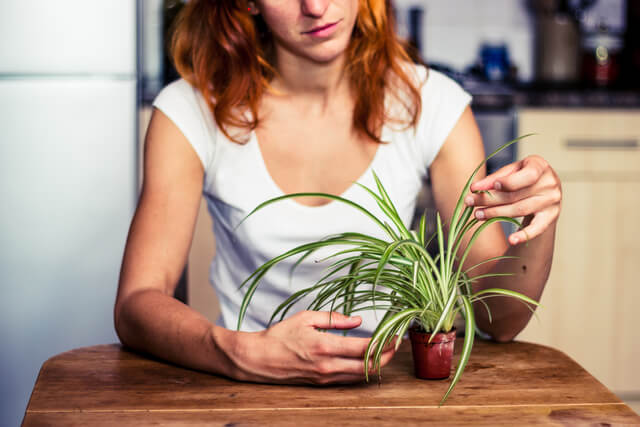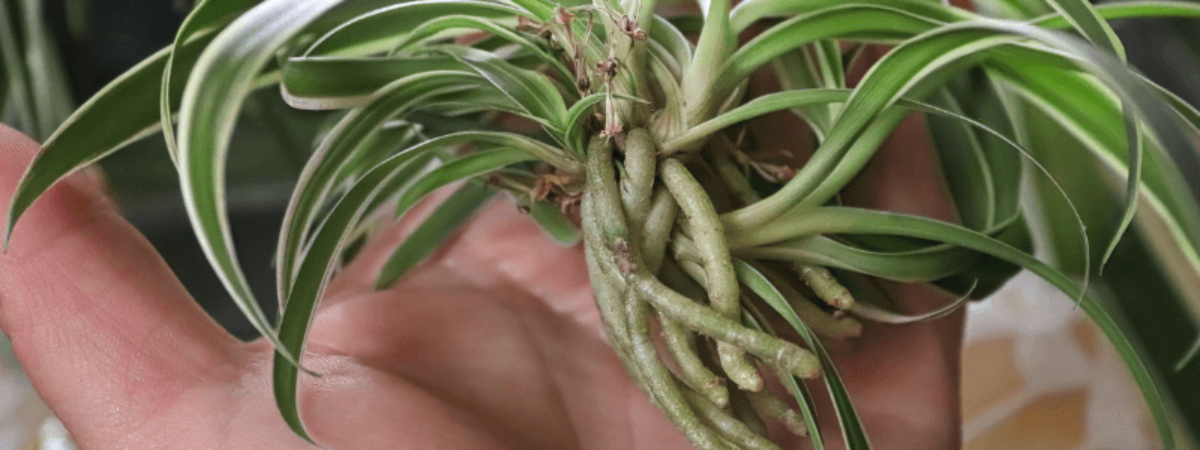Spider plant (Chlorophytum Comosum) is a very popular houseplant that propagates easily with the help of cuttings.
Because of its immense popularity, it’s widely available in most nurseries and garden centers. It is also commonly available online.
In this article, we’ll walk through 3 different methods you can use to propagate spider plants so you can add some more greenery to your home.
The best times to propagate spider plants are in early spring or late fall. In this period, it grows quickly. Although spider plants can be propagated at any time of the year. Click To TweetWhen to Propagate Spider Plant?
The best times to propagate spider plants are in early spring or late fall. In this period, it grows quickly. Although spider plants can be propagated at any time of the year.
They have a low rate of survival during hot summer months because of their susceptibility to pests and disease. Spider mites can heavily damage the these plant.
Light is not an issue with spider plants, but direct sunlight during propagation will cause the leaves to burn.

3 Ways to Propagate your Spider Plant?
Learn how to propagate spider plants so you can start your own plants from cuttings. There are three basic methods for propagating spider plants.
Propagate in water
Take a cutting from a healthy spider plant. Cut the stem off just below a node (the place where a leaf attaches to the stem).
The bottom leaves will fall off as you cut above them. Remove all the leaves from the bottom 2/3rds of the cutting. You now have an untillering cutting with just one node on top.
At this point, you could put the cutting in water to root it, but it will be more successful if you first let it callous over by placing it top down on some damp sphagnum moss or per-lite at about room temperature (65 – 75 degrees).
After about two weeks, when the callus has formed and hardened, place your cutting into water and it should root within 3 – 4 weeks.
Change the water once a week until roots appear on the top of the new plant if it starts to grow.
You can add a little bit of plant food to the water so they get extra nourishment, but it isn’t necessary. Watch your spider plant babies grow.
Note: This cutting can only be rooted underwater; once roots form, transfer to soil.

Propagate Spider Plants in Soil
You can easily propagate spider plant babies in soil by taking stem cuttings from your existing plant. This process is called layering and it works well for rooting many types of plants, including spider plants.
What you will need?
To start propagating spider plants in soil, you will need:
- Mother spider plant
- Clean potting soil
- Container or pot
- Water
- Scissors
- Potting tray or plate
You can follow these steps to start creating your own spider plant babies:
Cut off the baby spider plant with a sharp knife or scissors. Remove any leaves that are growing on the bottom of the stem that you just cut.
Take care not to damage the delicate roots. Wash the soil off of both ends of the baby plant. You can do this by placing it under running water for a couple of seconds or by gently rubbing off the soil with your fingers if it’s not too wet outside.
If you want to, you can give it a little haircut at this point (cut off any damaged parts).
Fill up your pot with good quality, moist potting soil. Place the baby plant into your pot at an angle so that its stem is pointing upward into the air.
The plant will eventually grow into an upright position but for now, this will allow it to create a healthy root system and will provide better drainage for when you water it.
Place the pot in an area where it will receive indirect sunlight. This means that it should be in either partial shade or full shade. Full sun is not recommended because it could burn or dry out your new baby plant before it has time to get established.
Spider plants are tolerant of a wide variety of conditions, so don’t worry about the type of soil you use. Just make sure that it’s not too heavy or airless, or your cuttings will rot before they get a chance to root.
Root babies while still attached to mother
Once the baby starts growing, you can move it to a larger pot. The mother plant will push out baby spiders all around it and they will grow in contact with the soil.
Simply follow these steps:
- Fill a pot with rich, well-draining soil.
- Carefully remove the baby from its clinging position on the mother plant’s roots and place it into the soil in your pot. You should see new roots begin to form at this point.
- Water the plant thoroughly to ensure that its roots are moistened and begin to grow into the soil.
- Place the pot in a warm, bright area of your home where it will receive at least four hours of sunlight per day.
- Continue watering the plant regularly, making sure that it gets enough water so that its soil is always soaked, but not so much that it becomes saturated and sits in water for long periods of time.
- Mist your spider plant regularly with room temperature water to help prevent problems with mold or fungus growth during the propagation process.
- Watch as your spider plant baby begins to mature into a full-grown adult! The process may take up to six months depending upon how old your original mother plant is, but you should notice new leaves growing within just a week or two after you’ve started propagating your baby spider plants!
Conclusion:
In final words, the propagation of spider plants is easy and the steps you need to take are also simple. It is effortless and can be done by anyone who is interested in doing so.
After propagation, caring is really important for gardener to keep the plant healthy and for long time. You should know its requirements and deal with them timely, that’s the secret to it.
You may also like to read
How to Care for Spider Plants? The Attractive Houseplant on Your Patio






